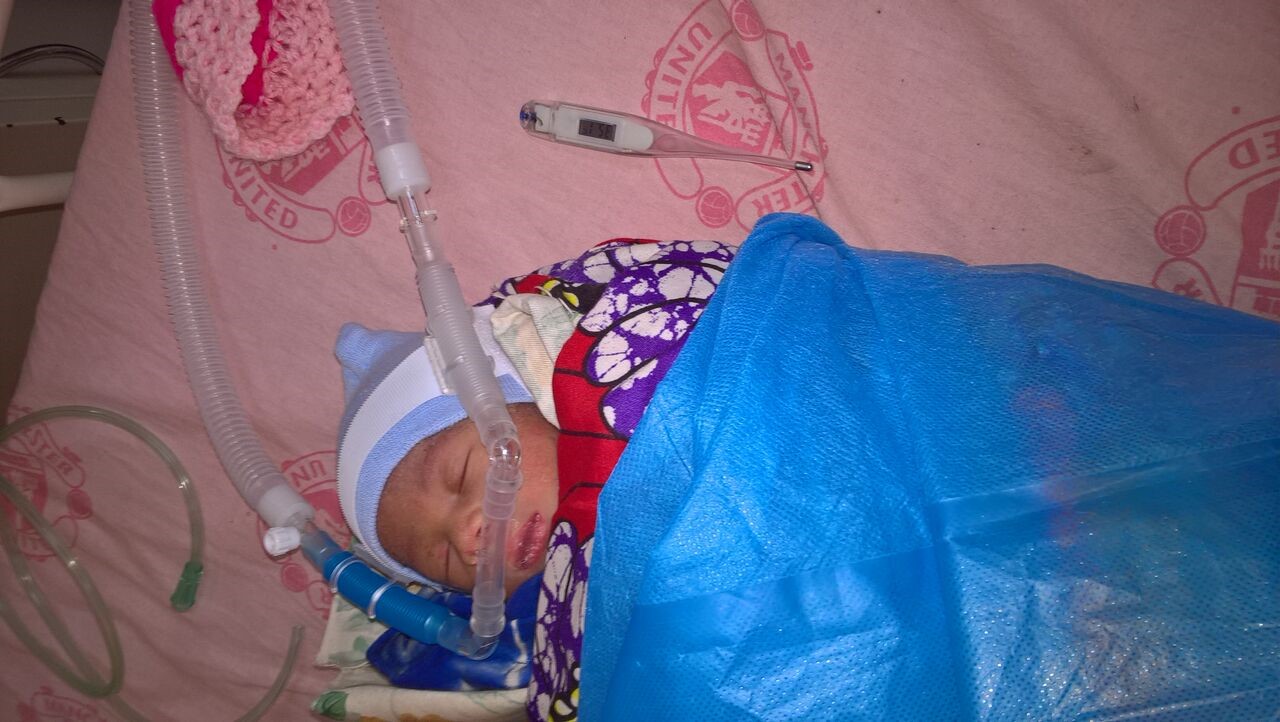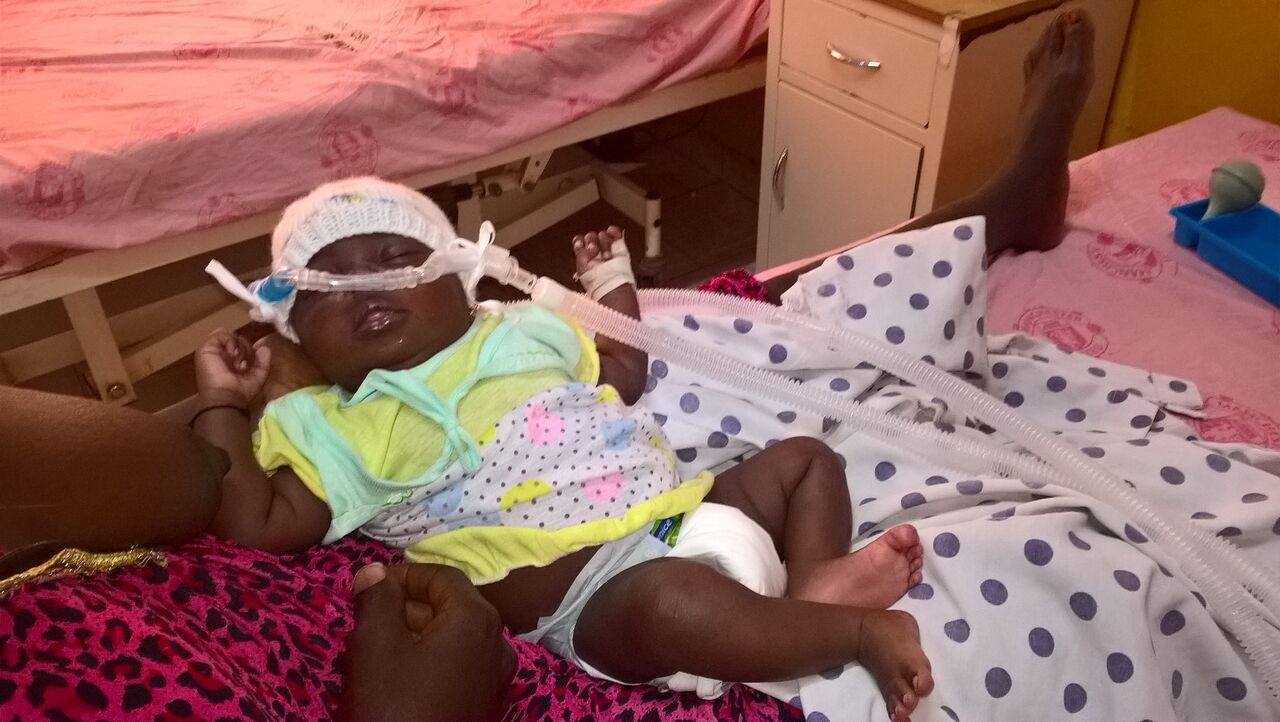News
Blog
March 14th, 2018
Diamedica is delighted to introduce this month’s Guest Blog, written by Jeannette Payne SRN, MSc and Anita Smith MBE of Bansang Hospital in The Gambia. The blog opens with the thoughts of Jeannette.
Since 2008 I have visited Bansang Hospital for two to three weeks most years and have seen a dramatic change and improvement in the care of the newborn and subsequent care of the neonate.
Initially the hospital introduced newborn resuscitation in line with Resuscitation Council guidelines, facilitated training of the staff and enabled them, with resources, to continue that training over the last decade.


Reducing Mortality Statistics
This training and development of newborn resuscitation has helped to improve the mortality statistics at Bansang Hospital but has also led to lower birth weight and sicker babies surviving and needing neonatal care.
| The feeding regime ensures the babies remain hydrated and nourished
The neonatal unit, based on the children's ward, has over the last decade moved from a unit with unsuitable incubators (wrong plugs, wheels missing, no filters) and an oxygen compressor to a centre of excellence in my opinion, using Kangaroo Care and nesting in a way that enhances the chances of the babies’ survival, and promotes bonding and developmental care.
The feeding regime ensures the babies remain hydrated and nourished, leading to full breast feeding. Infection control is central to all of this – only parents are allowed in the unit, shoes must be changed outside the unit, and a general ethos of cleanliness and order prevails.
Respiratory Challenges
Within these conditions many more babies were surviving and going home, but the cohort with Respiratory Distress Syndrome (RDS), Transient Tachypnoea of the New-born (TTN) and sepsis, who would all be helped with better respiratory support, were being lost.
| The children's unit now has 24-hour electricity
The neonatal unit has oxygen concentrators that rely on electricity, and Diamedica oxygen reservoir cylinders which ensure that there is always oxygen available. The children's unit now has 24-hour electricity with the support of solar-powered batteries. We had a few technical problems initially with the batteries, and the reservoir cylinders proved to be invaluable in saving lives. We have now overcome those problems and enjoy 24/7 electricity for essential equipment.

Photo: A three month old baby with pneumonia on CPAP
Respiratory Solutions
The Bansang Hospital Charity purchased a Diamedica bubble CPAP, and as I had planned to go back to Bansang this year it was a very timely acquisition.
Using the Diamedica manual, and a presentation used in Kettering Neonatal Unit, I prepared a training programme to take to Bansang hospital.
This was presented to the senior staff from both the neonatal/paediatric and labour wards, a paediatrician and the PNO (Principal Nursing Officer). All the staff were receptive and keen to use the CPAP.
The day after this session a baby was delivered and had birth asphyxia. She was successfully resuscitated and transferred to the neonatal unit, but was in respiratory distress, with marked recession and nasal flaring.
| After 36 hours the CPAP had been weaned down and taken off as another child, 3 months old with pneumonia, required the support CPAP could give
The baby was established onto CPAP, the nurses showing great understanding of how to set the oxygen and air flows and how to set the pressure, which was set at 6.
Using adult finger saturation monitors, it was possible to monitor the saturations. As these were good the % oxygen/air was reduced and after two hours the baby was in 23% oxygen and the flow reduced to 4.
After a few hours the breathing had settled, and the baby was being given expressed breast milk from a syringe.
After 36 hours the CPAP had been weaned down and taken off as another child, 3 months old with pneumonia, required the support CPAP could give. This decision was taken by the nurses, analysing what priorities they had, and in my view making the correct decision. Both children did well and were discharged.

Photo: Jeannette and Mariama
Cataloguing the Changes
The senior nurse on the unit designed an observation chart that recorded the oxygen concentration, flow, saturation, respiratory rate and temperature to ensure close monitoring of the babies.
| Over the next four weeks the CPAP had been used almost constantly, on babies from very low birth weight, TTN, birth asphyxia, and also a five-year-old boy
The comment from Mariama, who is in charge paediatric unit, was “We need more than one machine – what if we have twins?”
Over the next four weeks the CPAP had been used almost constantly, on babies from very low birth weight, TTN, birth asphyxia, and also a five-year-old boy, who had marked recession and difficulty breathing. The CPAP helped his rate and effort of breathing. I think this was due to the warm, humidified air being delivered.
This stabilised him enough for him to be transferred for a CT scan which showed he had an oesophageal blockage and trauma from food. This was successfully removed.
The training session was repeated while I was there and the presentation left with the PNO so this could be used for ongoing training. The manual was laminated and attached to the machine as a quick reference guide.
| In my opinion there are babies alive today who would not be alive if born before the CPAP machine arrived
Lifesaving Legacy
I contacted Mariama two weeks after leaving Bansang and she reported that the CPAP was in constant use. At the time of my call she said it was on a baby with RDS.
We did lose some of the babies that were put onto CPAP, but in my opinion there are babies alive today who would not be alive if born eight weeks ago, before the machine arrived.
The staff at Bansang Hospital have embraced this new method of delivering oxygen and respiratory support. Diamedica has produced a fantastic piece of equipment. It is very easy to use, sustainable and will improve the mortality in neonates in developing countries.
Anita’s Closing Thoughts
| I witnessed what I thought was a young boy taking his last breaths, gasping for air
I watched the CPAP being taken out of its box and being assembled for immediate use in the neonatal unit. There is nothing greater than seeing a baby that would not have survived the trauma of her birth if it wasn’t for CPAP.
I witnessed what I thought was a young boy taking his last breaths, gasping for air. As soon as he was linked up to the CPAP his poor body relaxed as his breathing became less laboured.
As a mother and with no medical experience to witness the effectiveness of the CPAP is one of life’s miracles.
Now I need to raise the funds for at least two more CPAP machines.
If you would like to help Anita’s fundraising efforts for Bansang Hospital, click here.